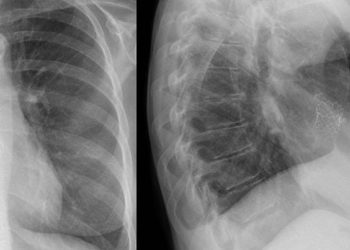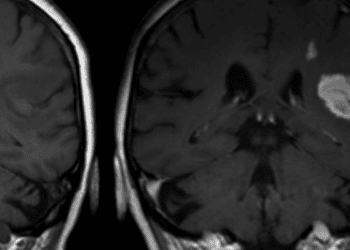Serum neurofilament light chain elevations may be viable as a biomarker for multiple sclerorsis
1. Serum neurofilament light chain (sNfL) elevations are a relatively specific biomarker of magnetic resonance imaging (MRI) disease activity in multiple sclerosis (MS) (82%–91.9% specificity) but have a low sensitivity (27.9%–42.6% sensitive)
2. Peak increase in sNfL was observed at an average of 9 weeks after the first Gd+ lesion was seen and remained high after resolution of Gd+ lesions in many participants.
Evidence Rating Level: 1 (Excellent)
Magnetic resonance imaging (MRIs) have been validated and included in the international guidelines for use as a prognostic marker in multiple sclerosis (MS). Due to the cost of MRI, a blood-based biomarker for inflammatory activity is needed to monitor disease progression and guide treatment. Neurofilament is a component of neuron cytoskeleton and serum neurofilament light chain (sNfL) levels correlate with disease activity, may predict prognosis, and are reduced by treatments. However, the interpretation of sNfL is currently limited by a lack of understanding of the temporal relationship between sNfL levels and disease activity. Researchers sought to further assess this in this post-hoc analysis of the RESTORE randomized trial, by comparing patients undergoing interruption natalizumab therapy and those that remained on the therapy for 24 weeks. Monthly serum and MRIs were taken to correlate MRI disease activity (i.e., gadolinium-enhancing lesions) and serum biomarkers. Compared to those without gadolinium-enhancing lesions (Gd+ lesions), participants with Gd+ lesions had significantly higher sNfL mean levels at 28 weeks (20.0 ± 30.5 vs 10.2 ± 7.9 pg/mL; p = 0.004). From baseline to week 28, participants who developed Gd+ lesions had a mean ± SD percentage increase in sNfL of 126.6% ± 232.2% vs 8.9% ± 46.2% (p < 0.001) in the participants who did not develop Gd+ lesions. There was also an increase in baseline and peak sNfL as the number of Gd+ lesions increased. In 80% of participants, new Gd+ lesions appeared before any increases in sNfL levels whereas 20% of patients reached peak sNfL levels before new Gd+ lesions were identified. Peak sNfL was delayed by an average of 8.7 ± 14.4 weeks after the first Gd+ lesion identification. Most patients with Gd+ lesions did not have elevations in sNfL levels. Using the 95th percentile sNfL levels of participants without Gd+ lesions as a threshold, sNfL was determined to be a relatively specific biomarker of MRI disease activity in MS (82%–91.9% specificity) but had low sensitivity (27.9%–42.6% sensitive). Further research into this domain may provide more insight into the possible role of sNfL as a prognostic biomarker for MS.
Click to read the study in Neurology
Image: PD
©2024 2 Minute Medicine, Inc. All rights reserved. No works may be reproduced without expressed written consent from 2 Minute Medicine, Inc. Inquire about licensing here. No article should be construed as medical advice and is not intended as such by the authors or by 2 Minute Medicine, Inc.







